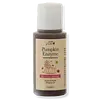What's inside
What's inside
 Key Ingredients
Key Ingredients

 Benefits
Benefits

 Concerns
Concerns

No concerns
 Ingredients Side-by-side
Ingredients Side-by-side

Sodium Bicarbonate
AbrasiveSodium Lauroyl Glutamate
Zea Mays Starch
AbsorbentSodium Cocoyl Isethionate
CleansingCoconut Acid
CleansingCamellia Sinensis Leaf Powder
ExfoliatingWater
Skin ConditioningSodium Isethionate
CleansingPapain
Skin ConditioningZinc Oxide
Cosmetic ColorantLysine Hcl
Skin ConditioningSodium Ascorbyl Phosphate
AntioxidantAcetyl Methionine
Skin ConditioningTheanine
EmollientProline
Skin ConditioningBetaine
HumectantCellulose Gum
Emulsion StabilisingCitric Acid
BufferingCarica Papaya Fruit Extract
Skin ConditioningSorbitol
HumectantGlycerin
HumectantButylene Glycol
Humectant1,2-Hexanediol
Skin ConditioningSodium Hyaluronate
HumectantSodium Bicarbonate, Sodium Lauroyl Glutamate, Zea Mays Starch, Sodium Cocoyl Isethionate, Coconut Acid, Camellia Sinensis Leaf Powder, Water, Sodium Isethionate, Papain, Zinc Oxide, Lysine Hcl, Sodium Ascorbyl Phosphate, Acetyl Methionine, Theanine, Proline, Betaine, Cellulose Gum, Citric Acid, Carica Papaya Fruit Extract, Sorbitol, Glycerin, Butylene Glycol, 1,2-Hexanediol, Sodium Hyaluronate
Camellia Sinensis Leaf Extract
AntimicrobialCucurbita Pepo Fruit Extract
Skin ConditioningVitis Vinifera Seed Extract
AntimicrobialVaccinium Myrtillus Fruit Extract
Skin ConditioningSaccharum Officinarum Extract
MoisturisingCamellia Sinensis Leaf Extract, Cucurbita Pepo Fruit Extract, Vitis Vinifera Seed Extract, Vaccinium Myrtillus Fruit Extract, Saccharum Officinarum Extract, Acer Saccharum Extract, Citrus Aurantium Dulcis Fruit Extract, Citrus Limon Fruit Extract, Lactic Acid, Vanilla Planifolia Fruit Extract, Bromelain, Papain, Glycerin
 Reviews
Reviews

Ingredients Explained
These ingredients are found in both products.
Ingredients higher up in an ingredient list are typically present in a larger amount.
Glycerin is already naturally found in your skin. It helps moisturize and protect your skin.
A study from 2016 found glycerin to be more effective as a humectant than AHAs and hyaluronic acid.
As a humectant, it helps the skin stay hydrated by pulling moisture to your skin. The low molecular weight of glycerin allows it to pull moisture into the deeper layers of your skin.
Hydrated skin improves your skin barrier; Your skin barrier helps protect against irritants and bacteria.
Glycerin has also been found to have antimicrobial and antiviral properties. Due to these properties, glycerin is often used in wound and burn treatments.
In cosmetics, glycerin is usually derived from plants such as soybean or palm. However, it can also be sourced from animals, such as tallow or animal fat.
This ingredient is organic, colorless, odorless, and non-toxic.
Glycerin is the name for this ingredient in American English. British English uses Glycerol/Glycerine.
Learn more about GlycerinPapain is an enzyme found naturally in the papaya plant's leaves, fruit, and roots. It has antimicrobial, soothing, and wound healing properties.
Glycine and Vitamin A are naturally found in papain.
While papain is often touted as skin-lightening, further studies are needed to prove this. However, papain has been shown to help soothe acne-inflammation.
Papain belongs to a class of enzymes called proteolytic enzymes. These enzymes break down peptides and amino acids.
Some studies found papain to be a potential skin sensitizer and allergen. Those with latex allergies might also be allergic to papaya.
Learn more about Papain